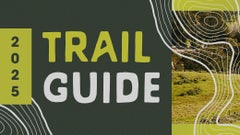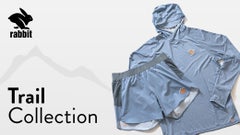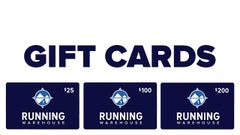A Beginners Guide to Track & Field Jump Events
Triple Jump, Long Jump, High Jump & Pole Vault Explained
Updated: November 4, 2024 by Marie Hobbs
We've reached that time of year when track and field is getting ramped up, and we want to get you prepared for the right gear to set personal records this season! We asked World-renowned mentor and coach, Harry Marra, to give insight on selecting the right shoe for the various jumping events in track and field - the Long Jump, Triple Jump, Pole Vault, and the High Jump.
Harry Marra has been in the track and field world as an athlete and coach for 60 years but is best known as the coach of decathlon world record holder Ashton Eaton and Olympic medalist Brianne Theisen-Eaton. Some of Marra's other accolades include 2016 IAAF World Athletics Coach of the Year, 2012 Nike Coach of the Year, and the author of the 2022 book Stories From the Passenger Seat: Lessons Learned From a Lifetime of Coaching.
And if you are new to the sport of Track & Field and feel like you want just a foundational shoe as you explore the jumping events, we got you. There are a lot of multi-purpose spikes and shoes out there that can work for you and not break the bank. See our Best Track & Field Spikes and Shoes for Beginners guide to get you started. But for now, let's "jump" into the various events for all our jumpers out there
What Are the Different Track & Field Jump Events
Track and Field jump events test an athlete's coordination and jumping ability through the combination of speed, strength, and agility and has a rich history going back to ancient Greece's original Olympics' pentathlon events. There are four different events that lie within the Jump category in Track & Field: Long Jump, Triple Jump, High Jump, and Pole Vault.
The first two jumping events mentioned above, the Long Jump and Triple Jump, are referred to as the Horizontal Jumps as the main objective is to jump for a maximum distance. The Pole Vault and High Jump are often referred to as the Vertical Jumps with the main objective of these two events is to jump up and over a bar for maximum height without dislodging it.
The Long Jump

The Long Jump consists of competitors running down a designated runway and jumping as far as they can from a mark (wooden or synthetic board) into a pit filled with soft sand. Controlled accelerated speed in the run-up approach, a proper flat-footed take-off from the jumping foot, to a high and far leap off the board into the sand are the fundamentals of success for the long jump. Because speed is such an important factor of the approach, it is not surprising that many long jumpers also compete successfully in sprints.
What to Look for in a Long Jump Spike
For the Long Jump event, look for a spike that can maximize your speed during your run-up approach then supply stability and leverage during the take-off of your jump. Long jump spikes have a stable, flatter outsole and firm back of the heel to help with proper leverage on take-off. The spike formation across the spike plate allows you to plant your foot and transition that energy to your jump. The midsole under the heel should offer some cushioning for that flat foot approach, and the shoe should feature a firm heel counter for stability as you transition your vertical energy to an upward and forward energy on your jump.
The Triple Jump

Similar to the long jump, the Triple Jump makes a horizontal jump for distance on a designated runway that has a large sand pit at the end, but the difference lies in the approach to this jump. The triple jump athlete accelerates down the runway to then incorporate three distinct, continuous movements — a hop, in which the athlete takes off and lands on the same foot; a step, landing on the other foot; and a jump from the board into the sand pit. If a jumper touches the ground with the wrong leg, the jump is disallowed so technique and rhythm are important as are speed, strength, agility, and focus to properly execute this jump.
What to Look for in a Triple Jump Spike
Triple jump athletes will use a tremendous amount of physical energy and impact on their feet when competing in this event, so triple jump spikes will need to have a secure fit, stiff support, and cushioning throughout the length of the shoe. Triple jump spikes have the same spike formation as the long jump spike and a very firm outsole plate for stability versus flexibility. It is very important to select a shoe with a secure fit to ensure the foot does not move too much during each phase of the jump. Movement would mean loss of energy and stability and that would make it tougher to properly execute each phase for a successful jump.
One thing to keep in mind is that triple jump spikes and long jump spikes feature many of the same characteristics, but the big difference is that triple jump spikes feature a higher level of cushioning to help diminish the impact of each landing during the three phases of this jump. The force exerted by athletes when landing on the ground between the hop and step phases can be up to 22 times their body weight so the extra cushioning is important!
Pole Vault

The Pole Vault competition is the event in which athletes attempt to jump over an elevated crossbar by vaulting themselves up and over it with a long, flexible pole. Pole vaulters begin each vault attempt with a running start before planting the pole in a “box” on the ground while continuing to hold it, thereby using that momentum of energy as the pole bends to carry them to a position where they can arch their body feet-first over the crossbar with dislodging it. There is a large mat on the other side of the apparatus so that the athlete can safely land after their vault.
What to Look For in a Pole Vault Spike
Pole vault spikes are very similar to long jump spikes in that they provide support across the full length of the spike. The design of the spike will provide the athlete speed and acceleration down the runway and deliver a stable take-off when planting the pole for take-off. It is incredibly important to ensure your foot is secure in the shoe, and there is no slippage on your acceleration and take-off. For multi-event athletes, some jumpers find a long jump spike can also work well for the pole vault event, saving on cost. Just make sure the spike you choose is durable enough to handle training and competition and has a snug and secure fit to provide you with a comfortable and safe experience for your event.
High Jump

The High Jump is the other vertical jump field event for track and field. For the high jump, competitors must jump over a horizontal bar without knocking the bar to the ground. Unlike the pole vault, athletes must do it unaided, requiring high levels of speed, explosive power, and agility on their part to succeed. Jumpers have a runway or take-off area that is wide so they can use a straight or angle running approach and can only have one foot planted on the ground when initiating the jump. There is a large mat on the other side of the bar apparatus so they are able to safely land after their attempt.
What to Look for in a High Jump Spike
High Jump Spikes are different than the traditional jump spikes as they have spikes at the ball of the foot and also four extra spikes on the heel. These extra spikes serve to aid the jumper in transitioning from their run up to take off so they will have a secure heel-first footing for maximum grip on any track. In our video with Coach Marra, he talked about this unique extra spike feature and also how this spike has a very stiff sole to provide enough energy that you can accelerate with ease into your approach and then abruptly transition that energy to a horizontal velocity to go up and over the bar.
Important Aspects for a Jump Spike

Fit
One of the most important considerations in selecting your shoes for jumping events is the comfort of fit. Unlike running shoes, your jump spikes should fit snugly so that you do not have extra movement in your foot as you transition from the approach to the take-off phase. You want your shoe to have a tight but comfortable lockdown, which is necessary to improve performance and avoid injury because it will keep your footing secure. Most jump spikes come with VELCRO straps at the midfoot for that optimal comfortable hold on your foot. Check out our How to Fit Track Spikes article where we go into a little more in depth on the fit of the different shoes used for Track and Field.
Versatility
Many jumping athletes, especially beginners, do multiple jumping events to experiment and see how they like each event and decide how they want to manage their track and field experience. As your skills and experience grow, you can utilize the same shoe for your different events. Look at all the different components of the shoe, and whichever one fits and feels best, use that shoe. One example Coach Marra highlighted in his video was coaching Olympic American Decathlon athlete, Ashton Eaton, who used a Triple Jump spike for his long jump and pole vault events as that was the spike that worked for him on those events. Again, the comfort of fit and secure stability is important as is the durability of the shoe to handle practices and competition. If you do go the route of using a particular spike for various events, make sure you have a solid-quality and durable spike that can handle repeated use.
Stability
The four jumping events, long jump, triple jump, high jump, and pole vault, all have a run-up and then a take-off component that requires the athlete to be flat-footed on that transition versus being on your toes as you would be for just running. Jumping spikes have the underlying characteristic of having a stiff plate on the outsole and a good heel counter to ensure stability of your foot and ankle during use. There are slight nuances to each spike for each event, but the stability of the shoe and the snug and comfortable fit are the most important attributes to get the most out of your jump in a safe and effective manner.









































